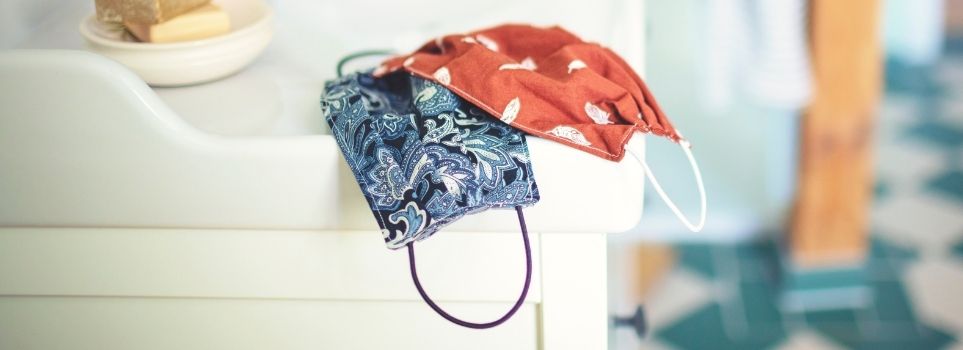Thus far, reusable cloth face masks are the best tool that we have to prevent the spread of COVID-19. They’re a better solution than disposable surgical masks, which are a potential source of microplastic pollution, according to a recent study published in the Marine Pollution Bulletin. Despite their eco-friendliness, however, the reusable cloth face mask does become less effective at blocking out the coronavirus once they’ve been worn thin by repeated washing and wearing.
Aside from all the homemade facial coverings that we’ve been using, many commercially made masks come with no warning of when it’s time to toss the product. With this in mind, it’s important to look out for the signs that your mask is no longer safely filtering out the respiratory droplets that carry the virus. So, here are a few key indicators to look out for when it comes time to switch out your reusable cloth face masks.
The fit is no longer snug.
If you’ve been wearing your mask for a while, and the fit is starting to loosen, it’s time to replace the worn-out elastic or retire the mask altogether. Your mask needs to fit snug under the chin, across the cheeks, and around the nose. In other words, it shouldn’t have any gaps at all. According to infectious disease experts, a mask should also be replaced if the nose clip no longer fits tightly and in these other areas.
The mask is stained.
Whether they’re caused by coffee spills or makeup, stains on a mask can also be a sign that it’s worn out. If the mask is visibly soiled and washing does not remove the stain, it’s probably time to toss it. Although it might not seem like a sign to retire a mask, a stained mask indicates its overuse, meaning it’s time to contact your favorite mask vendor – local or otherwise – and put in your next order.
The fabric has worn thin.
Mask material can become thinner the more you wash them, and thinner fabric provides a weaker barrier to prevent the transmission of COVID-19. Though holes, gaps, and thinning fabric on your mask may be obvious, a way to objectively test is to try blowing out a candle with your mask on. If you are able to blow it out, the mask is not effective at protecting you.
You’ve washed a mask more than 30 times.
There’s no doubt about it – frequent washing will stretch the fibers in some fabrics. While it is crucial to wash your masks regularly, it’s also important to recognize when they’ve reached the end of their lifespan. If you are using a high-quality mask, go by the advised guidelines of 30 washes. Typically, this is a good rule of thumb, as these mask types will lose their shape, elasticity, and effectiveness after multiple washes.
It’s not unfair for us to say that living at Oxford at Tech Ridge Apartments in Austin, Texas is the best! To further improve your daily routine, here are some lifestyle-enhancing tips that will help you revamp your normal way-of-life in a variety of ways.



